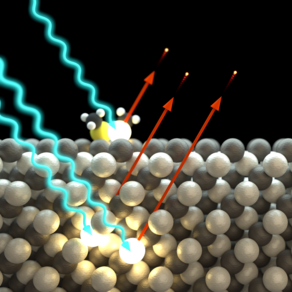2D Materials
In 2004, the experimental synthesis of graphene as the first 2D material kicked off the search for similar materials of higher atomic number. In recent years, twodimensional counterparts of numerous elements from the carbon group have been realized. 2D materials often form a honeycomb structure, i.e., their atoms are arranged hexagonally.
Theoretical predictions and experimental evidence show that these materials exhibit extraordinary electronic properties, often very different from those of their 3D relatives. For example, the so-called two-dimensional Dirac materials exhibit exceptionally high mobility of charge carriers (Dirac fermions) due to their Dirac-like dispersion. As the atomic number of the elements increases, the materials exhibit increasing spin-orbit coupling as well as increasing buckling. This leads to the applicability of remarkable properties such as the quantum spin Hall effect or topological insulators.

Since the structure of 2D materials has a great impact on their electronic properties, we focus on the structural analysis of these materials. Especially for substrate-grown 2D materials, the interfacial structure is of utmost importance, since the substrate can induce structural changes, which in turn can lead to new electrical properties. For this reason, we primarily perform the analysis of the chemical and atomic structures at the interfaces as well as the uncovering of the electronic properties of 2D materials as a function of their structure.

In our research group, we are working on the following 2D materials, among others:
- Graphene: R. Hönig et al., Nanotechnology 30 025702 (2019).
- Silicene: P. Roese et al., Appl. Surf. Sci. 467-468 580 (2019), M. Schmitz et al., J. Phys.: Condens. Matter 33 275001 (2021).
- Germanene: L. Kesper et al., Sci. Rep. 12 7559 (2022), L. Kesper et al., Appl. Nanosci. 12 2151 (2022).
- And in currently ongoing work with stanene and antimonene.



